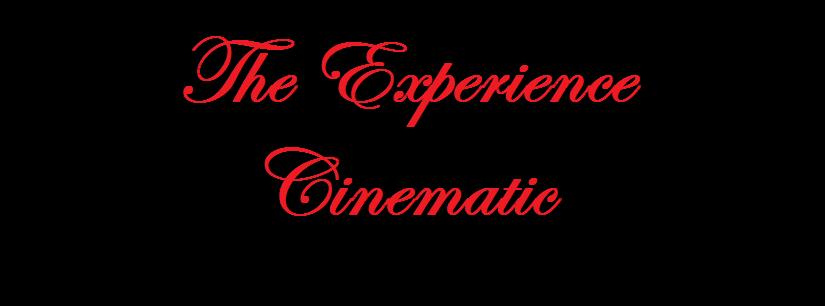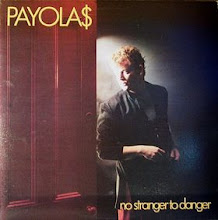
I think I have to come up with a new term for talking about Child’s Play (Holland 1988), and the best I can think of is accidental film. An accidental film is a film that is a success despite the fact that various problems during the production process should have resulted in the final product being a complete failure. Child’s Play is an accidental film, one that should require any viewer of the film to watch the special features in order to see how several different sets of intentions formed the finished film.
Let me back up a bit, as my context for viewing Child’s Play is a little odd. I had known that the film was about a child who ends up with a doll possessed by the soul of a killer, a solid B-film idea. However, before going into the film, I had also read an interview with Don Mancini, who originated the idea for the film and wrote the initial drafts, where he offhandedly mentioned that his original concept for the film had the doll being the id of the central child, as opposed to the soul of the killer. Interested on how the original concept could evolve into what was in the finished film, I decided that it might finally be time to check it out, especially with the new DVD that had been recently released.
Furthermore, the film is directed by Tom Holland, who directed a fantastic homage to eras of horror gone by in Fright Night (1985). Holland also wrote the screenplay to Psycho II (Franklin 1983), which is a film that is better than it has any right to be. Holland’s involvement was enough to push me over the edge into checking out Child’s Play.
Ultimately, Child’s Play proves to be is a film that is at war with itself. On one hand, you have a film about a child’s need for friendship, and how toy companies prey upon this need. On the other hand, you have a film about a serial killer who was trained in voodoo and uses it to cheat death in order to get back at those who killed him. Conceivably, there should be a way that these two premises could fit together, but more often than not they seem to be at odds. Furthermore, while the film features some clever writing, directing, and subtlety which is unexpected for a film about a killer doll, the film is also filled with moments of equally bad writing, with more than a few groan inducing lines and some poorly conceived scenes which are directed in such an over the top way as to make the viewer laugh, and not intentionally.
But somehow, the film still seems to work.
Take the opening scenes of the film. It begins with the final moments of killer Charles Lee Ray’s life (Brad Dourif, who also voices Chucky later in the film and in the future instalments), as he is abandoned by his partner, chased into a toy store by Officer Mike Norris (Chris Sarandon), and is bleeding to death from a gun shot. Coming across a Good Guy doll, Ray recites a voodoo enchantment which places his soul in a doll. However, the scene in which Ray passes his soul on is executed in an over the top fashion: a storm cloud gathers overhead, and lightning strikes down to complete the process, causing a minor explosion in the process. The whole sequence is a bizarre combination of overdone cop and criminal confrontation clichés with magic spells, setting the viewer up for an entirely different film.
Cut to the introduction of Andy (Alex Vincent). The scene follows Andy as he watches the Good Guys animated television series and makes breakfast, burning toast and causing a general mess as any young kid would. The scene is well constructed, playing with the audience’s lack of knowledge at this point: who is this kid and why is he performing these tasks by himself? Where are the adults? It turns out that Andy is in fact making breakfast-in-bed for his mother, belying the initial impressions of a problematic situation with the seemingly harmless childhood event.
However, the filmmakers complicate the matters through the Good Guys cartoon Andy watches. It is an insidious bit of animation and live action advertisement, in which a one of the Good Guys promises to be the friend of a child on the show before it slips into an advertisement for the Good Guy dolls, which promises similar types of adventure and companionship. The ad is a deft bit of filmmaking, subtly suggesting what Andy really wants in his desire of the doll, and starts what should be the heart of the film: a critique of children’s entertainment and toys which prey upon their insecurities.
Watching these two sequences back to back, it is surprising to see that they seem to belong to the same film, each demonstrating two entirely different sets of sensibilities, both in subject matter and formal approach. Of course, the opening sequence could have worked as a fake out, setting the audience expectations up only to deliver a different film. However the rest of Child’s Play bounces back and forth between these two different stories and approaches before jarringly trying to bring them together in a bizarre third act, which works about as well as one might expect. It is like Frankenstein’s monster: all the pieces are there, but do they really seem to go together? At best, the function well enough.
What is frustrating is that buried in this Frankenstein is a much more cohesive and thematically thought out film, and the DVD confirms as such as Mancini runs through what his original screenplay had been, seemingly a horror film/satire by way of the Paul Verhoeven /Edward Neumeier collaborations. While Mancini enjoys the finished film and praises it and his collaborators, in watching the documentaries on the film one cannot help but get annoyed at producer David Kirschner, who forced the serial killer/voodoo material into the film. Holland, who is more o less absent save archive material from the DVD, seems to have been interested in an entirely different approach himself, looking to make a more emotional film about the broken family. At least these family elements work along with the original intent of the film rather than come out of a different film altogether. With these different directions though, it is harder to give credit to anyone on the film for the elements that surprisingly work.
Case in point: I was ready before watching the special features to praise the filmmakers for allowing the audience to work by themselves to have to put together the details of Andy’s situation and his loneliness. The film never belabours the point of Andy’s loneliness, instead requiring the viewer to pay attention and make the connections. However, the DVD features then reveal that over half an hour was cut out of the film before release, none which is provided on the disc, leaving me to wonder if the filmmakers at one time did have material that made explicit what now remains implicit. In other words, are some of these aspects of the film sheer accidents? I’m not sure. Most certainly, it does not matter in the final product, but it leaves the viewer with the feeling that the whole film was a mess that just managed to work out well enough to leave a lasting impression.
At the end of it all, I am willing to recommend Child’s Play as more an oddity than a great film. It is fun, but when it is over, there is a chance that you will be more interested in the possible remake than this finished film, at least if Mancini returns to his original concept. I know I am.


No comments:
Post a Comment
What Is Your Cinematic Experience? Post Here!